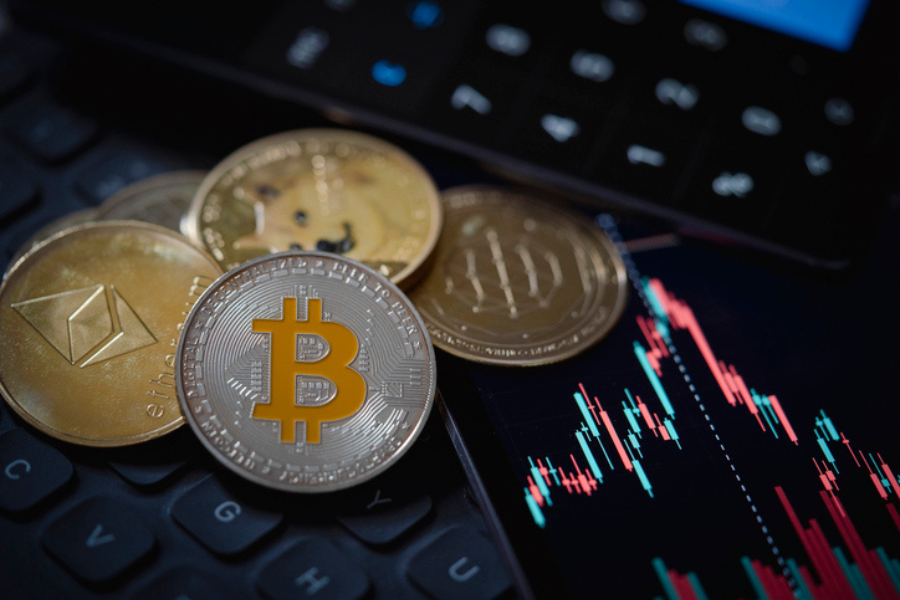

Bitcoin trails traditional assets in August as the month draws to a close, hampered by ebbing liquidity and lingering worries that governments may sell from their stockpiles of the cryptocurrency.
The US, China, the UK and Ukraine are potential sources of such disposals, as are creditors receiving tokens from the collapsed Mt. Gox digital-asset exchange, research company Kaiko wrote in a note. That’s part of a possible $33 billion overhang of Bitcoin supply, according to the analysis.
Kaiko estimated the US administration holds about 203,220 Bitcoin, followed by China’s 190,000, the UK’s 61,200 and 46,350 for Ukraine. Governments seize tokens in criminal cases, while Ukraine is thought to have received donations to help fund its defense against Russia’s invasion. Meanwhile, Mt. Gox has roughly 46,170 of tokens left to distribute, Kaiko said.
“Supply overhang has been a topic in crypto markets throughout the summer,” Kaiko analysts Adam Morgan McCarthy and Dessislava Aubert said. There are several “prominent holders that could be potential sources of selling pressure in the coming months,” they added.
The fears of punchy sell orders come alongside a thinning of liquidity in the Bitcoin market that can amplify price swings in response to big trades. The digital asset has dropped some 8% so far this month against that backdrop, compared with gains of about 2% in global gauges of stocks and bonds.
“Spot market volumes for Bitcoin remain subdued, contributing to recent choppy price action,” Sean Farrell, head of digital-asset strategy at Fundstrat Global Advisors LLC, wrote in a note. Seasonal trends suggest activity typically picks up after Monday’s US Labor Day holiday, he added.
One of the metrics Farrell flagged is the seven-day average of Bitcoin turnover — trading volume divided by the token’s market value — which has declined toward 2% after peaking near 5% around the digital asset’s record rally in March.
Bitcoin has struggled in August despite net inflows into US spot-Bitcoin exchange-traded funds and growing expectations that the Federal Reserve will loosen monetary policy in coming weeks.
The trading backdrop has also become more challenging in the US Bitcoin ETF sector, according to JPMorgan Chase & Co. strategists. That’s based in part on a metric known as the Hui-Heubel ratio, which purports to provide insights into liquidity by measuring the number of trades it takes to move prices.
“It is striking that this metric has been deteriorating for all spot-Bitcoin ETFs since March, pointing to overall deterioration of spot-Bitcoin ETF liquidity over the past six months,” the JPMorgan team including Nikolaos Panigirtzoglou said.
Combined daily trading volume for the US Bitcoin ETFs has dropped to less than $2 billion from a peak of more than $10 billion in March, according to data compiled by Bloomberg.
Bitcoin was little changed at $59,535 as of 8:34 a.m. Friday in London, about $14,000 below its March peak. Tokens such as Ether and Solana were mixed.

Eliseo Prisno, a former Merrill advisor, allegedly collected unapproved fees from Filipino clients by secretly accessing their accounts at two separate brokerages.

The Harford, Connecticut-based RIA is expanding into a new market in the mid-Atlantic region while crossing another billion-dollar milestone.

The Wall Street giant's global wealth head says affluent clients are shifting away from America amid growing fallout from President Donald Trump's hardline politics.

Chief economists, advisors, and chief investment officers share their reactions to the June US employment report.

"This shouldn’t be hard to ban, but neither party will do it. So offensive to the people they serve," RIA titan Peter Mallouk said in a post that referenced Nancy Pelosi's reported stock gains.
Orion's Tom Wilson on delivering coordinated, high-touch service in a world where returns alone no longer set you apart.
Barely a decade old, registered index-linked annuities have quickly surged in popularity, thanks to their unique blend of protection and growth potential—an appealing option for investors looking to chart a steadier course through today's choppy market waters, says Myles Lambert, Brighthouse Financial.
